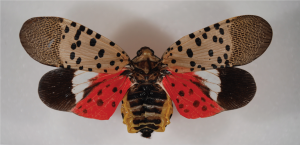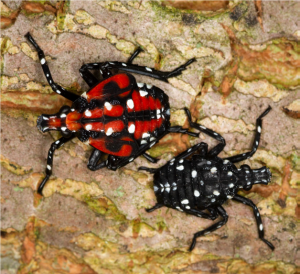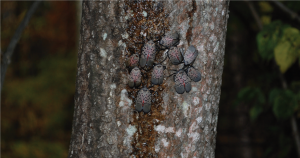Remember last year’s vacation trip? You picked the perfect location, checked into the hotel and made sure to check every mattress corner for bedbugs. Bugs can hide in the strangest places. Now with COVID-19 those people insisting on still taking a vacation are flocking to Northwest Florida. While some are still utilizing hotels, the majority are pulling into the RV park or campground. They are bringing anything and everything anyone could possibly need for the week, from firewood to camp chairs. That way no one will have to go to the store. Somewhere on the vehicle or within all the stuff there may be some hitchhikers, insect stowaways. The problem is that these bugs may be staying even after the human beings head back north. Florida is notorious for invasive species. With 22 international airports and 15 international ports in the state, hundreds of foreign insects are intercepted each month. But, not all the problem creepy crawlers are coming from the south. Many have been introduced to northern states and work their way here.
One to keep an eye open for is spotted lanternfly (Lycorma delicatula). The Asian native was first detected in Pennsylvania in 2014. Since then it has spread to the east and south. While the insect can walk, jump, or fly short distances, the quickest way for the spotted lanternfly to relocate is to lay eggs on natural and man-made surfaces. Some of those egg masses may fall off and get left at the park. Next spring after the eggs hatch the nymphs will begin feeding on the sap of numerous plants, often changing species as they mature. Host plants include grape, maple, poplar, willow and many fruit tree species.
Nymphs in the early stages of development appear black with white spots and turn to bright red before becoming adults. At maturity spotted lanternflies are about 1 ½ inches wide with large colorful, spotted wings.
At rest their forewings are folded up giving the lanternfly a dull light brown appearance. But when it takes flight its beauty is revealed. The bright red hind wings and the yellow abdomen are very eye-catching. Remember, in nature bright colors are often a warning. Though spotted lanternflies are attractive, they pose a valid threat to native and food-producing plants. The adults feed by sucking sap from branches and leaves. What goes in must come out. Sugar in, sugar out. Spotted lanternflies excrete a sticky, sugar-rich fluid referred to as honeydew. Black sooty mold often develops on honeydew covered surfaces.
Spotted lanternflies are most active at night, steadily migrating up and down the trunk of trees. During the day they tend to gather together at the base of the plants under a canopy of leaves. So, you may need your lantern (or head lamp) to locate them. If you find an insect that you suspect is a spotted lanternfly, please contact your local Extension office of the Florida Department of Agriculture and Consumer Services Division of Plant Industries.
- Watch for “Melting Grass” - February 19, 2025
- Palms Can Suffer in the Cold - January 30, 2025
- Camellia Care - January 9, 2025



